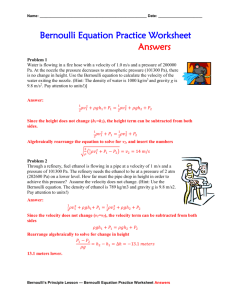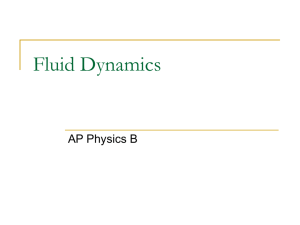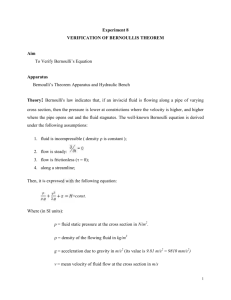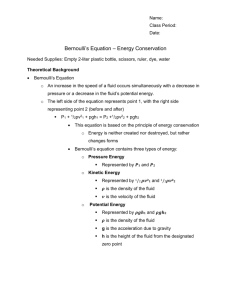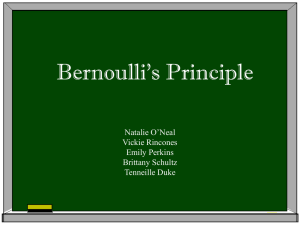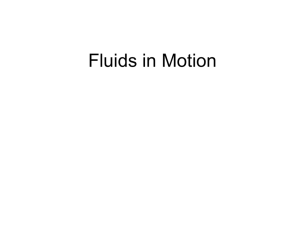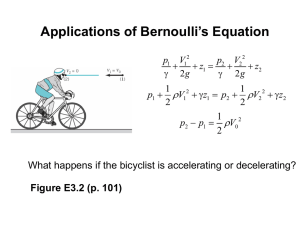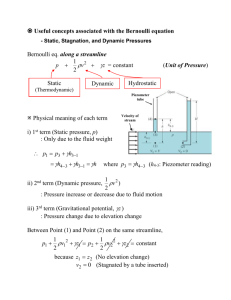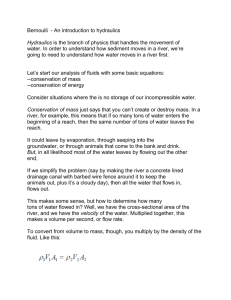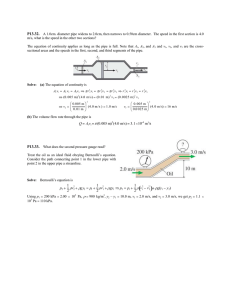Practice Bernoulli Solutions
advertisement
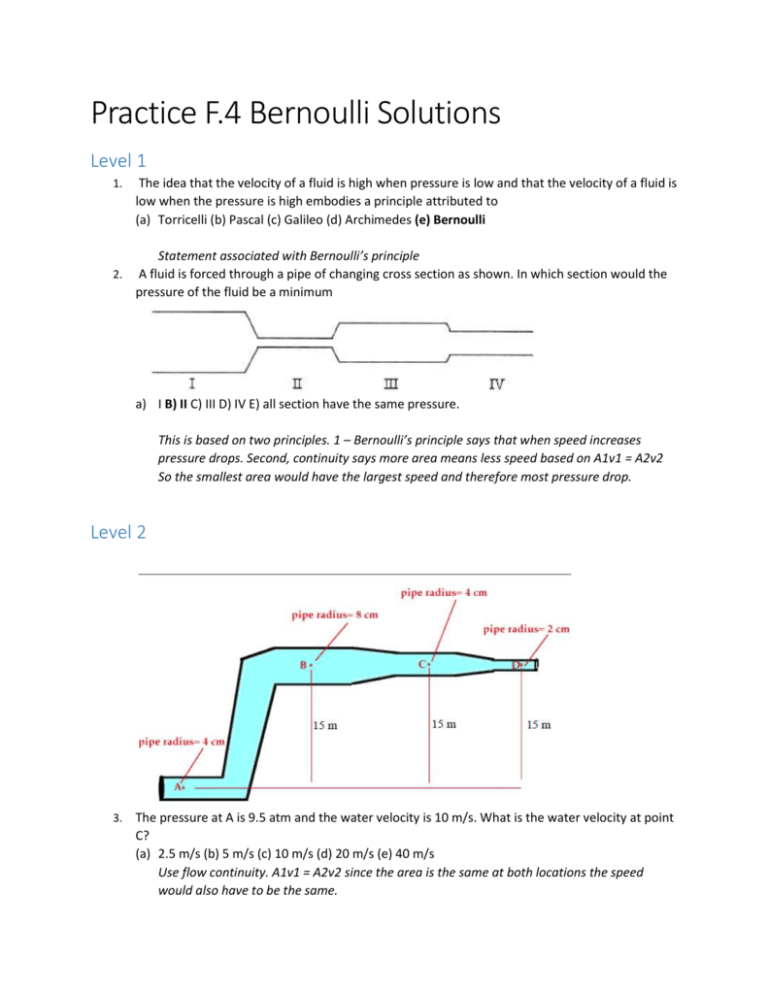
Practice F.4 Bernoulli Solutions Level 1 1. The idea that the velocity of a fluid is high when pressure is low and that the velocity of a fluid is low when the pressure is high embodies a principle attributed to (a) Torricelli (b) Pascal (c) Galileo (d) Archimedes (e) Bernoulli Statement associated with Bernoulli’s principle 2. A fluid is forced through a pipe of changing cross section as shown. In which section would the pressure of the fluid be a minimum a) I B) II C) III D) IV E) all section have the same pressure. This is based on two principles. 1 – Bernoulli’s principle says that when speed increases pressure drops. Second, continuity says more area means less speed based on A1v1 = A2v2 So the smallest area would have the largest speed and therefore most pressure drop. Level 2 3. The pressure at A is 9.5 atm and the water velocity is 10 m/s. What is the water velocity at point C? (a) 2.5 m/s (b) 5 m/s (c) 10 m/s (d) 20 m/s (e) 40 m/s Use flow continuity. A1v1 = A2v2 since the area is the same at both locations the speed would also have to be the same. 4. (relating to the picture on the previous page) The pressure at C is (a) 0 N/m2 (b) 100,000 N/m2 (c) 150,000 N/m2 (d) 800,000 N/m2 (e) 1,100,000 N/m2 5. A cylindrical tank containing water of density 1000 kg/m3 as shown in the cross section above. A hole of radius 0.0010 m in the bottom of the tank is opened. Water then is filled to a height of 0.70 m and placed on a stand flows through the hole and through an opening in the stand and is collected in a tray 0.30 m below the hole. At the same time, water is added to the tank at an appropriate rate so that the water level in the tank remains constant. (a) Calculate the speed at which the water flows out from the hole. (b) Calculate the volume rate at which water flows out from the hole. (c) Calculate the volume of water collected in the tray in t = 2.0 minutes. (d) Calculate the time it takes for a given droplet of water to fall 0.25 m from the hole. Solution a) Use Bernoulli, same derivation as problem B2005B5 … v2 = √2gh … v2 = √2(9.8)(0.7)… v2 = 3.7 m/s b) Volume flow rate Q = Av = π(0.001)2(3.7) = 1.16x10–5 m3/s c) Q = V / t 1.16x10–5 = V / (2min * 60 s/min) V = 0.0014 m3 d) Free fall. d = vit + ½ gt2 – 0.25 = (– 3.7 t) + ½(– 9.8) t2 Alternatively, first determine v solve quadratic t = 0.062 s f at the 0.25 m location then use vf = vi + at to solve for t. Jedi Solution

